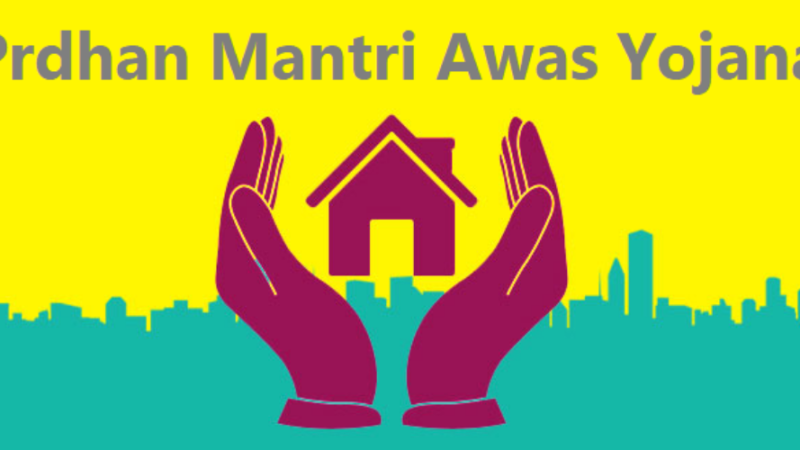The Pradhan Mantri Awas Yojana or PMAY is an ambitious project of the Indian Government, which aims to provide citizens with affordable housing schemes. Launched on 1st June 2015, this housing project offers cost-effective pucca houses to both rural and urban poor.
Besides, beneficiaries can also enjoy the basic amenities such as proper sanitation, water connection, 24-hour electricity supply, etc. under this scheme.
Highlights of PM Awas Yojana
- The scheme targets to build more than 2 Crore houses by 2022.
- As of 29th August 2019, the government approved 88 Lakh houses against the total demand of Rs. 1.12 Crore.
- A total of 1.53 Crore houses have been constructed from 2014 to 2018.
- Interest subsidy of up to 6.5% is offered on home loans under this scheme.
The subsidy scheme is exclusively for people in Economically Weaker Section (EWS), Lower Income Group (LIG) and MIG I & II (Middle Income Group).
It is broadly classified into two categories depending on its focus segments –
- PMAY (HFA)-Urban or PMAY-U
- PMAY-Gramin/Rural or PMAY-G
Difference between PMAY Gramin and Urban
Below are some of the aspects on which the segments differ from each other –
- Eligibility criteria
In the case of PMAY-U, a family comprising a husband, a wife, and their children (if any) who are unmarried is a beneficiary.
They are segregated based on their annual incomes –
EWS – Annual earnings up to Rs. 3 Lakh.
LIS – Yearly income within Rs. 3 Lakh and Rs. 6 Lakh.
MIG I – Income within Rs. 6 Lakh to Rs. 12 Lakh per year.
MIG II – Annual income between Rs. 12 Lakh and Rs. 18 Lakh.
Note that minority groups, including OBC, ST and SC can also enjoy the key PMAY benefits by providing their caste certificates.
Some other clauses include –
- While the EWS category can receive financial assistance in every vertical of the scheme, the LIG and MIG categories are eligible for the CLSS benefits.
- The household must already own a pucca house in their or any other family member’s name.
- In the case of PMAY-G, the latest Socio-Economic and Caste Census, 2011 is considered to gather information and identify beneficiaries.
The census lists everyone qualified for another housing scheme, PM Rural Awas Yojana. The Gram Sabha classifies those who have received financial assistance under this scheme or those who have been disqualified. It adopts a participatory process to publish the final PMAY list of beneficiaries every year. The qualified households can then apply for financial benefits under the Pradhan Mantri Awas Yojana for Rural. The PMAY scheme eases one’s way to becoming a homeowner easily.
Some other mandates are –
Applicants must have an annual income within Rs. 3 Lakh to Rs. 6 Lakh.
Beneficiaries should belong to BPL (Below the Poverty Line), EWS or LIG category.
Subsidy benefits on home loans
Under the Credit Linked Subsidy Scheme (CLSS), individuals can avail of home loans from various financial institutions in India at a subsidized rate of interest. With affordable financing, they can construct or buy a house without much repayment hassle.
Below are the subsidy benefits that PMAY Urban beneficiaries can enjoy –
LIG and EWS categories can avail home loans of up to Rs. 6 Lakh at a subsidized interest rate of 6.53%.
Beneficiaries in the MIG I category can enjoy a 4% interest subsidy on home loans up to Rs. 9 Lakh.
MIG II category can avail up to Rs. 12 Lakh as home loans with an interest subsidy of 3%.
On the contrary, the PMAY Rural beneficiaries can avail a 3% interest subsidy on home loans up to Rs. 2 Lakh.
Other features
PMAY-U
-
- Under in-situ slum redevelopment, the government aims to redevelop slums and offer housing facilities to the dwellers.
- The carpet area of homes for the EWS category is 30 sq. m. while that of the LIG category is up to 60 sq. m.
- Under this affordable housing scheme, beneficiaries from the minority community, those with disabilities, women, SC, ST, and other backward classes, transgender, manual scavengers, etc. will receive priority.
Ensure to check the features and learn how urban residents can get a house via PMAY before applying.
PMAY-G
- Beneficiaries receive good quality cooking fuel under PMAY-G.
- The authority manages liquid and solid wastes discharged from households under this scheme.
- State-of-the-art technologies like geo-tagging and information communication are available to ensure accurate selection of beneficiaries.
- One of the PMAY benefits for rural is that NRDWP offers drinking water to households.
- The carpet area of houses for the PMAY-G category is 25 sq. m.
While the Pradhan Mantri Awas Yojana’s Urban and Gramin components differ in financial and operational aspects, their ultimate objective is the same – ‘Housing for All.’ As Phase 3 is on-going, potential beneficiaries can opt for exclusive home loans under the PMAY scheme and own a house for a dignified living.













